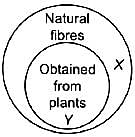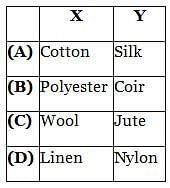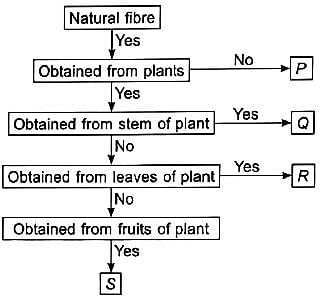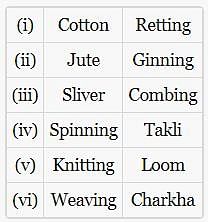Olympiad Test: Fibre to Fabric - 3 - Class 6 MCQ
10 Questions MCQ Test - Olympiad Test: Fibre to Fabric - 3
Paheli wants to present her friend a gift made of plant-fibre. Which out of the following will she select?
| 1 Crore+ students have signed up on EduRev. Have you? Download the App |
Boojho went to a cloth shop. There he found a fabric which was smooth to touch, had vibrant colour and shine. The fabric could be
Read the given statements and select the correct option.
Statement 1 : Cotton is a preferred fabric to wear in summers.
Statement 2 : It has good absorbancy and allows air to pass through it.
Identify Xand Y in the given Venn diagram and select the correct option.


Refer to the given flow chart and select the correct option.


Refer to the given flow chart and select the incorrect statement regarding P, Q, R and S.

Refer to the given relationship and select the option which correctly identifies the same relationship.

Refer to the given paragraph and select i the correct option regarding X, y and Z.
The process of making yarn from fibres is I called X. Yarn are used for making fabrics. Two main processes are used to make fabrics from yarn. In process Y, two sets of yarn are arranged together to make a fabric while in process Z single yarn is used to make a piece of fabric.


















